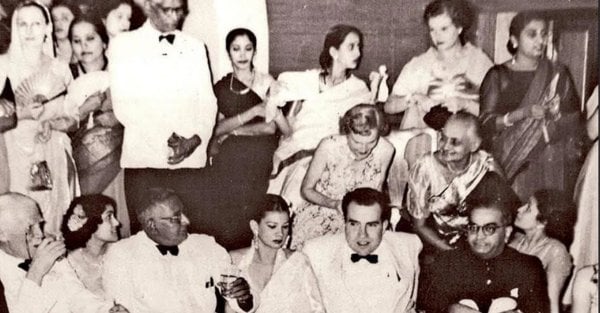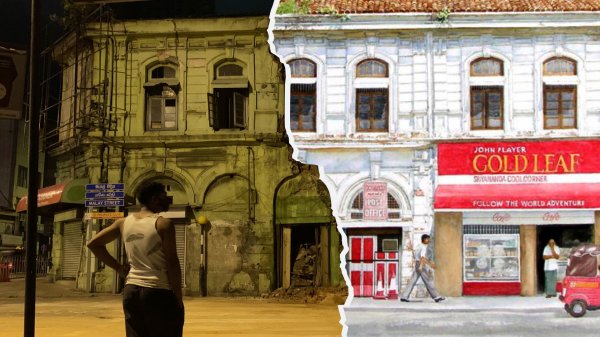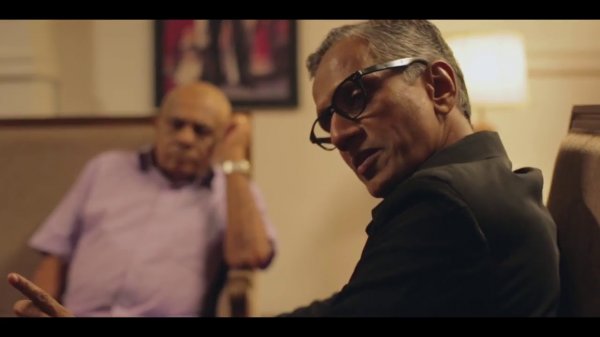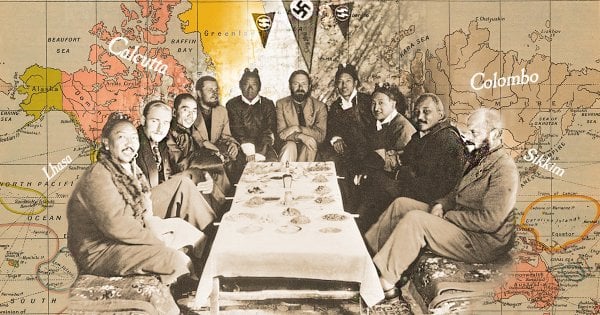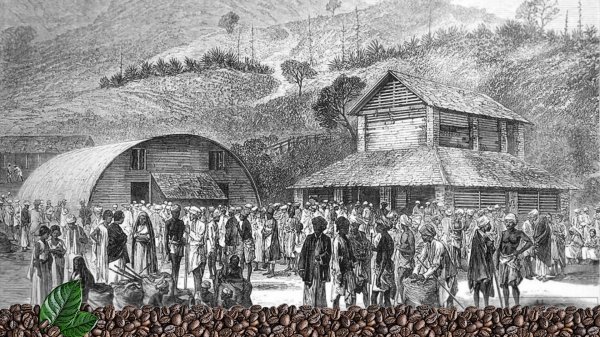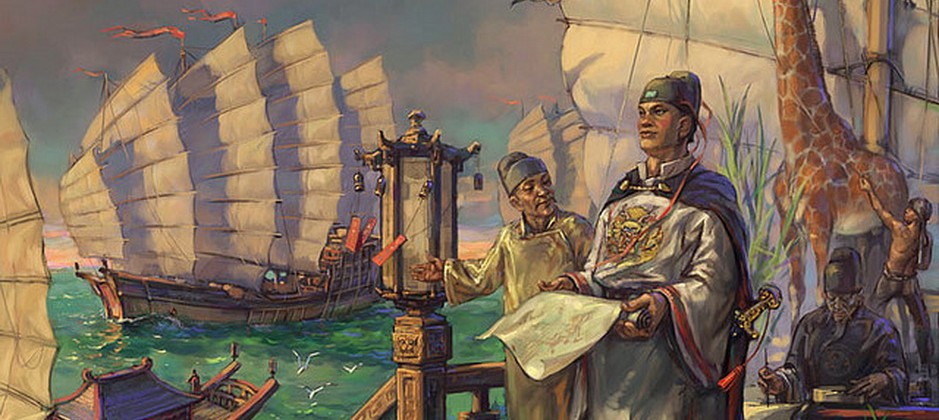
Sri Lanka’s present relationship with China may revolve mostly around a host of development and infrastructure projects, but this wasn’t always the case. The truth is that China and Sri Lanka have been friends for centuries ‒ since 10 B.C. to be exact.
Boasting of a competitively long recorded history, Sri Lanka has always shared ties with the biggest names in ancient history, one of which was the Chinese Empire and another, the Roman Empire. In fact, a little research into the earliest reference to our little island can be found in ancient Roman literature, and here we stumble across a peculiar name.
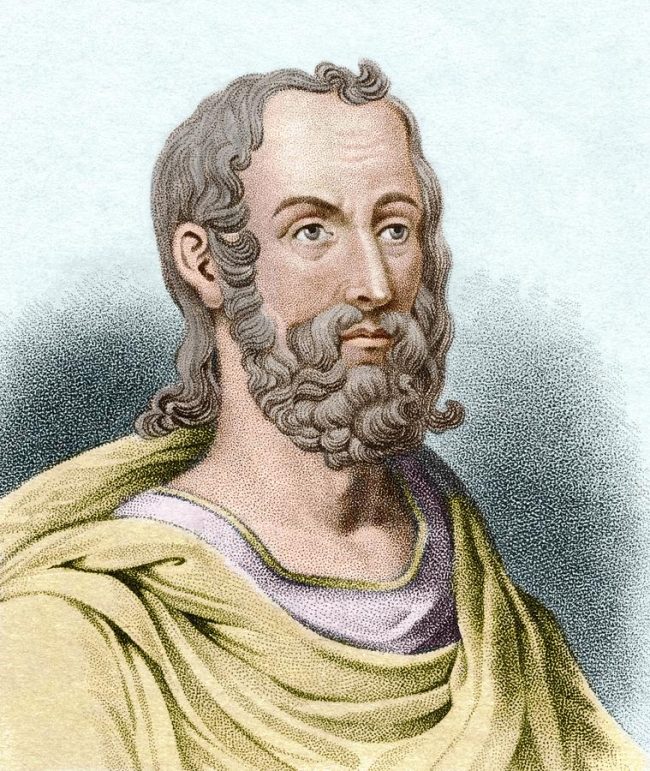
Pliny The Elder, as per the imagination of Sheila Terry. No contemporary depiction of Pliny is known to survive. This man was the first to reference ancient Sri Lanka in Roman Literature and he had personally wintessed the friendship between Chinese merchants and the natives of Sri Lanka. Image courtesy: images.fineartamerica.com
Roman historian and naturalist, Pliny the Elder (who died during the eruption of Mount Vesuvius), once recorded a Chinese embassy calling for the trade of ceramics and silk to Sri Lanka, at the ancient port of Mantota. Mantota is now the port of Jambukola and can found at the most northern point of Jaffna. Sadly, what’s left of this port today is just the ruins of a temple, which has nothing of significance to tell us about the stories of old, but ancient shipwrecks around Jaffna’s coastline are full of Chinese ceramics.
The Chinese befriended the ancient royalty of Zeilan (which is what Sri Lanka was known as back then) and gifted them generously with riches, including the famous silk of China. In return, the kings of our island declared the Port of Mantota to be the port of call for a 4,000-year-old trade route between the Chinese Empire and the Mediterranean Sea, where all the other empires existed in majestic unison.
The Silk Road
The route was coined later as ‘’Die Siedenstrasse’ by a German explorer and scholar, Baron Ferdinand von Richthofen, in the 19th Century. It meant ‘The Silk Road’ and Sri Lanka had its part to play in the history of this route. Luckily, China and Sri Lanka were both Buddhist monarchies at the time, and this made it easier for them to have a little chat over some tea since they had so much common ground.
In 410 A.D. a celebrated Chinese Buddhist pilgrim traveller, who went by the name of Fa-Hien, arrived in Sri Lanka. In his chronicles, he documented a trip to Anuradhapura, mentioned numerous instances of Chinese silk merchants, and provided a detailed narrative of King Mahanama’s palace and its adjoining monastery.
Back then, the Chinese were called ‘Sihaladvip’ and were trading their goods for gems, ivory, and spices of the Sri Lankan kingdom. Fa-Hien’s documentation of his visit reveals a side to the story of ancient Sri Lanka that the Mahavamsa does not capture.
Other notable figures of history that graced the lands of Sri Lanka through the Silk Road include the romantic Arab pilgrim, Ibn Batutta, who came to see Sri Pada (Adam’s Peak) around 900 years after Fa-Hien’s visit.
The famous merchant traveller Marco Polo (the man who inspired Christopher Columbus to travel), who, at that time, had spent 17 years in the Court of the Mongolian Emperor, Kublai Khan, was also sent to Sri Lanka for two years between 1292 to 1294 AD. His was one part of a series of missions by the Mongolian-Chinese Empire as a friendly gesture, in return for Sri Lanka’s hospitality in the commercial trade of gems, local medicinal plants, and drugs.
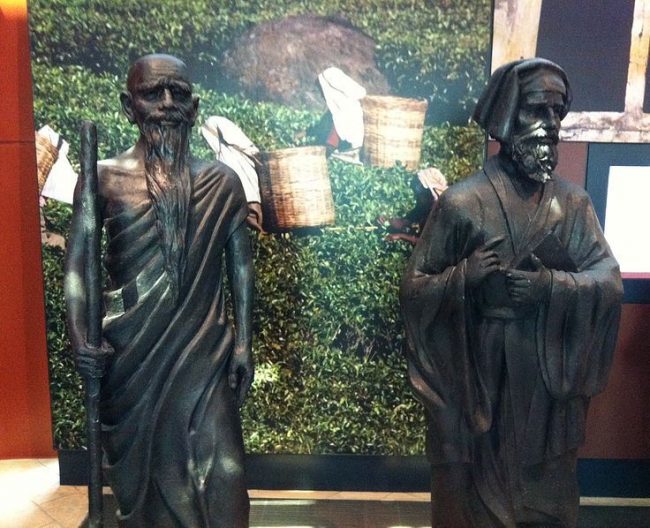
Statues of Faxian (Fa-Hien) and Marco Polo in the Maritime Experiential Museum & Aquarium, Resorts World Sentosa, Singapore. Image courtesy commons.wikimedia.org
Trouble In Paradise
Like any friendship, this one, too, had its complications. In the early 1400s, General Cheng-Ho led an expedition by orders of the third Ming Emperor, Cheng-Tsu, to obtain the Tooth and Bowl relics from Sri Lanka.
He arrived at Cini-gama (at a coast near Beruwala) after a two-year journey at sea, only to fail at attaining the relics. Cheng-Ho ended up seizing the Sri Lankan king and his family as captives and took them back to China on the 6th of July 1411. This fiasco ended with the Emperor Cheng-Tsu graciously sending the royal family back home.
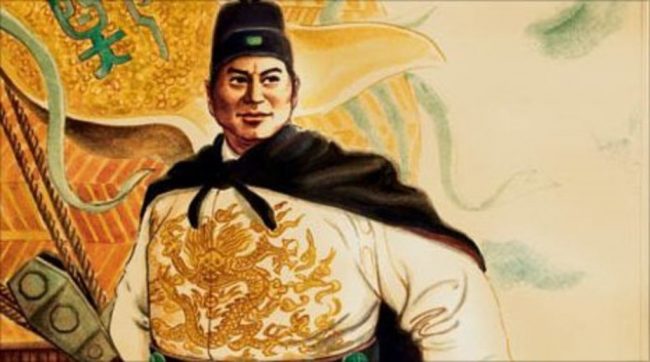
A portrait of General Cheng-ho (Zheng-He). The general travelled to over thirty countries with over 300 ships, including the treasure fleet, and 28,000 sailors. He has been given credit as the first explorer to have established a sea route directing the western Pacific and the inhabitants of the Indian Ocean. There has also been debate over whether he had reached the Americas decades before Christopher Columbus did. Image courtesy: bbc.co.uk
However, just before Cheng-Ho had left, he inscribed into a stone slab a message in Chinese, Persian, and Tamil. This trilingual slab was to eventually find its way to the Colombo National Museum and would be considered an enigmatic piece of Sri Lanka’s history. It also displayed the unison between the three dominant faiths at the time – Buddhism, Hinduism, and Islam.
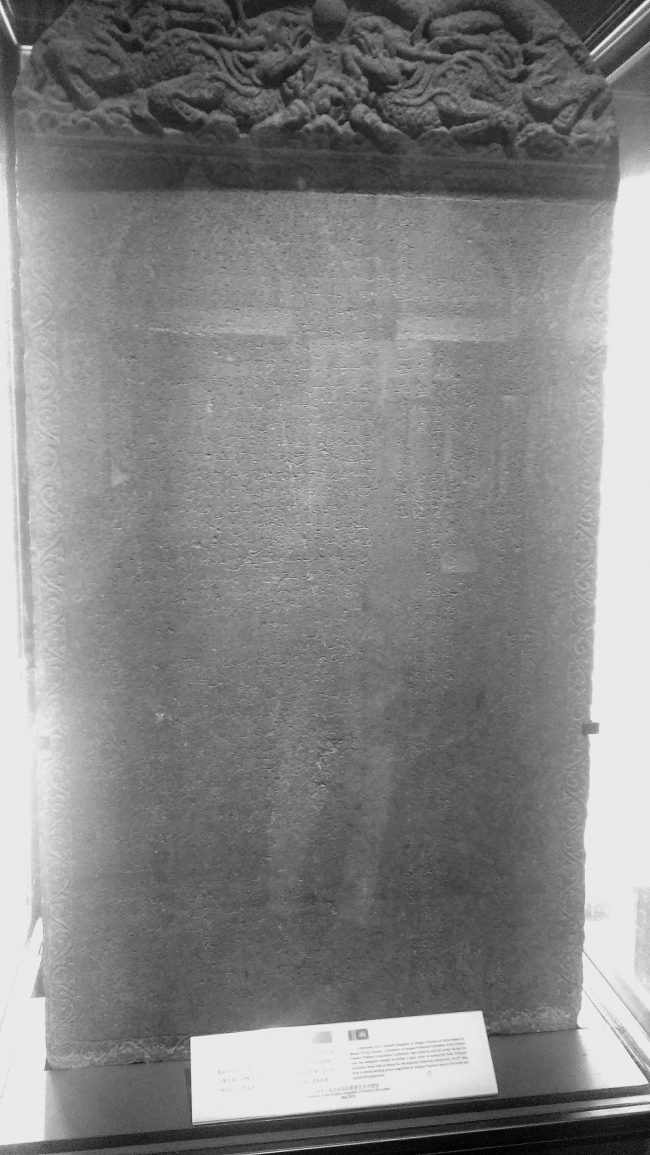
A photograph of the scripture on the trilingual stone slab in the Colombo National Museum. Image courtesy writer
Sri Lanka’s relationship with China continued to flourish, and so did the Silk Road, for another century or so. This ancient friendship had stood the test of time and still seems to be going strong. If we were to look into all the influences that early civilizations like China made on this little island, we could perhaps fill an entire book.
One could take a stroll down a busy street of Colombo on a work day and find it difficult to believe that Rome had been closer to us than we think and China and Persia closer still. It really makes you wonder what kind of ancient history coursed through your lineage before it reached you.

